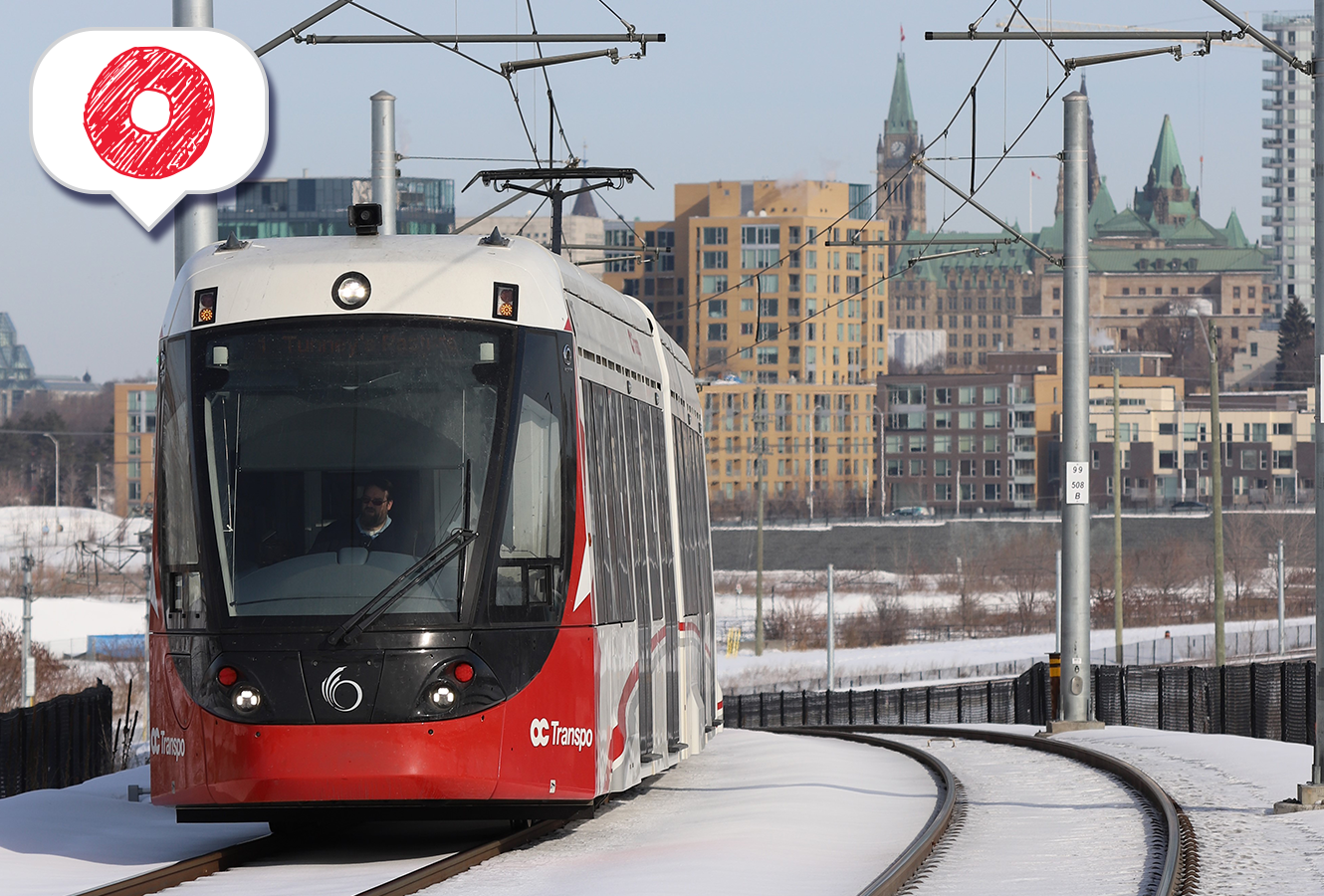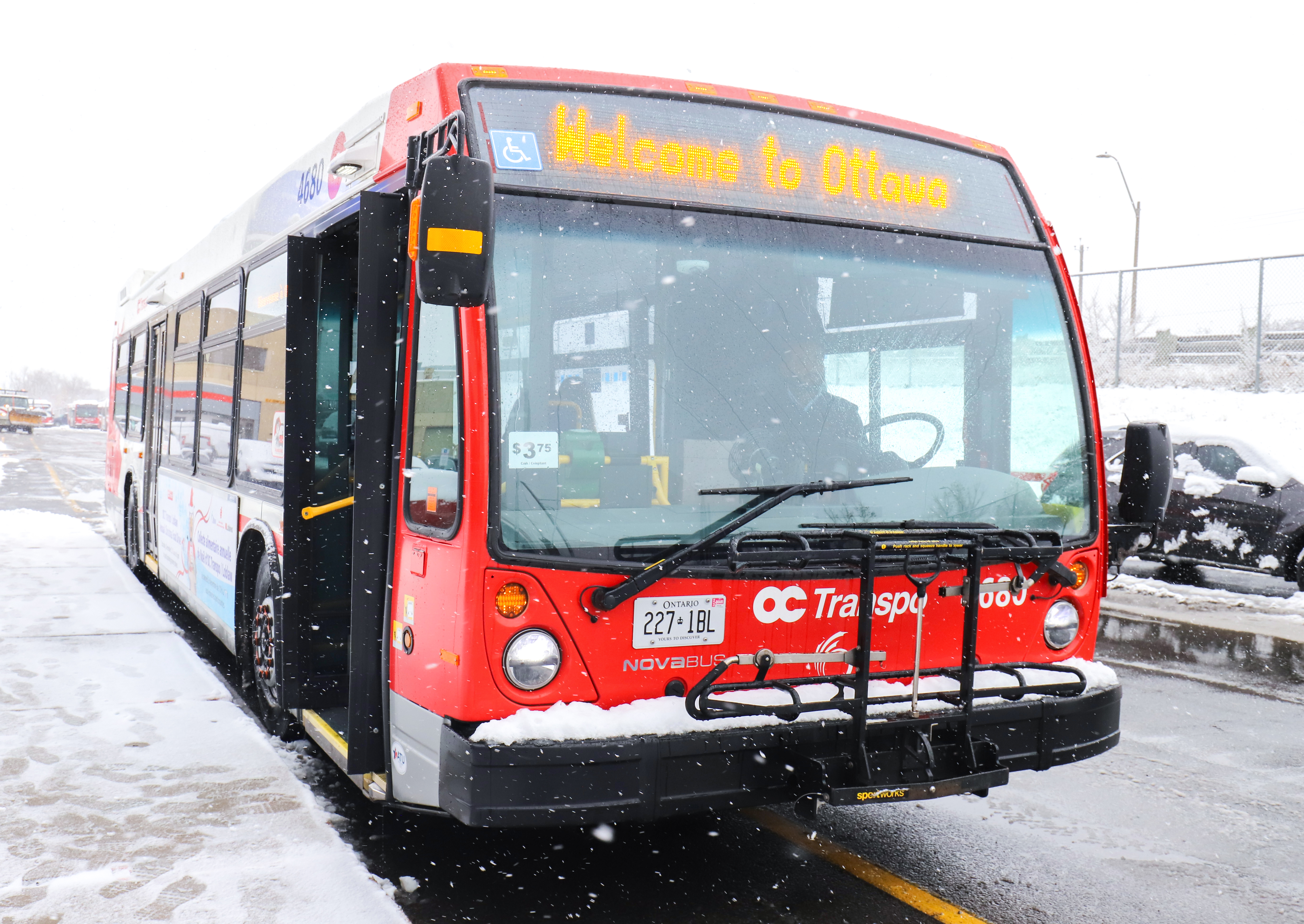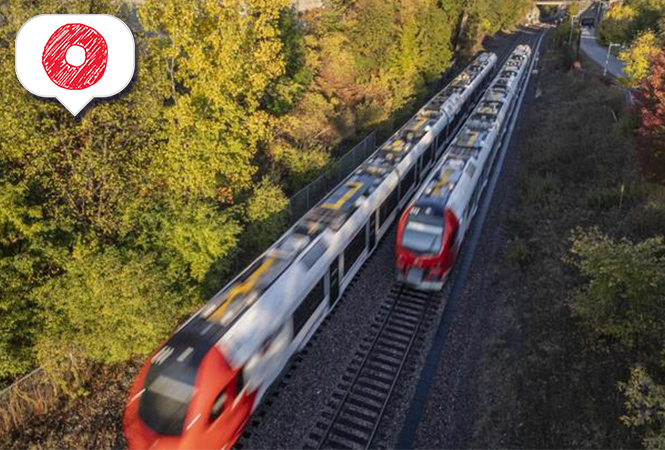OC Explained: Winter Operations

OC Explained: Winter Operations
Heads up Ottawa. Winter is here.
Every year, Ottawa sees its fair share of winter storms. We never know what mother nature is going to throw at us.
Work begins months in advance so that we can continue to offer customers safe and reliable service, regardless of the weather. Let’s peek behind the scenes to see how OC Transpo prepares and adapts to severe winter weather.
Before the storm
Well before the first snowflake, OC Transpo crews take multiple steps to prepare the O-Train system for winter:
- Snow fencing is strategically installed to prevent drifting snow.
- Switch heaters are inspected and tested.
- Overhead wires that power the trains are inspected and adjusted.
- Critical train equipment is cleaned and winterized.
- Specialized winter carbons are installed onto the pantographs of some of the trains.
- Train heating is activated and heated floors are turned on.
- Station heaters are tested.
- Additional resources are secured to assist with snow clearing and removal.
Keeping the rail, bus and Para Transpo system running in the winter, especially when a storm hits, is all about planning.
When snow is in the forecast, we do our best to assign buses that perform best. Articulated buses have a harder time on the road compared to our regular buses. When possible, 40-foot buses are strategically deployed instead.

Click the image above for a closer look.
Our bus tires meet the 3 Peak Mountain Snowflake criteria for snow traction performance. This standard is recognized by tire manufacturers throughout North America to show that a tire has been tested to provide quality traction in snow and winter conditions.
When we are expecting 31cm or more of snow or other severe weather, we have a Severe Storm Schedule for buses on weekdays. Wondering how you will know if a Severe Storm Schedule is happening? We will always inform you at least a day in advance, through social media updates, text notifications and our website.
During the storm
Before each winter event, OC Transpo closely monitors weather conditions and may adjust service depending on the severity of each event.
When snow begins to fall, we work closely with numerous City departments to minimize transit disruptions. For example, Public Works will prioritize snow clearing on as many bus routes as possible. They also help keep transitway stations and park and rides clear.
Throughout each storm, snow is cleared on bus platforms and around shelters.
On the O-Train, switch heaters help melt ice and snow before it can accumulate. This helps keep rail switches operating during the winter months. At certain locations, heated train platforms help prevent snow and ice from building up. Don’t be surprised to see additional staff out working on platforms, on pathways and even on the tracks. Additional resources and specialized equipment are brought in to assist during a weather event.
If snow is falling overnight, you might see trains running overnight. This helps to reduce snow and ice from building up.
To prepare for freezing rain, we use enhanced weather forecasting to proactively take steps to help maintain rail service and build on the successes from previous winters, such as:
- Increasing the number of winter carbon strips on top of trains to keep the overhead wires free of ice
- Applying anti-icing solution to the overhead wires
- Deploying additional staff to monitor in-service conditions at strategic locations
How can you prepare for winter storms?
When the forecast calls for extreme weather, transportation of any kind can be challenging. We have multiple plans in place to keep the city moving under these types of challenging conditions and do our best to get you where you’re going on time. When facing winter weather, be sure to give yourself plenty of time and use our travel planning tools to plan your trip in advance:
- Download Transit, our recommended mobile app
- Plan your trip in advance using our travel planner
- Sign up to receive alerts by e-mail or text for specific bus routes at www.octranspo.com/alerts
- Follow @OC_Transpo and @OC_TranspoHelps on Twitter
Was this information helpful? Let us know by emailing thenextstopblog@ottawa.ca.

